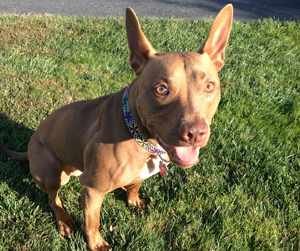
Dr. Justine Lee's gives you the basics on pet first aid. For more from Dr. Lee, find her on Facebook!
As we celebrate April as National Pet First Aid Awareness Month, I’m going to focus on how to check vital signs on your pet. Believe it not, it’s harder to check vitals on your pet than you think. When in doubt, practice, as it’s really important. Why? Because helps us when we perform cardiopulmonary resuscitation (CPR) in emergency situations.
Vital Signs
Knowing the normal vital signs for your dog or cat can help you determine if anything is out of the ordinary. For small and medium-sized dogs, normal vitals are:
For small and medium-sized dogs, normal vitals are:
Pulse: 70-140 beats per minute
Respiratory rate: 15-30 breaths per minute
Temperature: 100-102.5° F
For larger dogs, normal vitals are:
Pulse: 50-120 beats per minute
Respiratory rate: 15-30 breaths per minute
Temperature: 100-102.5° F
And finally, for cats, normal vitals are:
Pulse: 140-200 beats per minute
Respiratory rate: 15-30 breaths per minute
Temperature: 100-102.5° F
First, you have to know how to take your pet’s pulse:
1. Use a timer (or a watch with a second hand).
2. Find the pulse or heartbeat in one of two ways:
- Place your hands on both sides of the chest cavity (just behind the elbows).
- Place two fingers inside your pet’s thigh, near where the leg and body meet (dogs only)
3. Count the beats for 15 seconds, then multiply by four. This gives you the number of beats per minute.
4. Note: Cats are very difficult to get a heart rate on!
To calculate your pet’s respiratory rate, do the same thing but count the number of full breaths in 15 seconds. Then multiply by four to get the number of breaths per minute.
 So, now that you know how to check vitals, what do you do if you can’t feel a heartbeat?
So, now that you know how to check vitals, what do you do if you can’t feel a heartbeat?
Before starting chest compressions, be certain that there is no heartbeat. Performing chest compressions while the heart is still beating can cause extreme harm to your pet. Signs of cardiopulmonary arrest include:
- Unconscious
- Not breathing
- No heartbeat
You should also simultaneously check to see if your pet is breathing. You can do this by one of three ways:
1. Place your ear next to your pet’s nose and mouth and listen for breathing
2. Place your hand on the side of your pet’s chest to see if it rises with breath.
3. Feel for air movement out of your pet’s nostrils.
If you confirmed that there’s no heartbeat or that your pet isn’t breathing, follow these steps as demonstrated here:
1. Open your pet’s airway by gently extending his neck and clearing any obstructions.
2. Check for a heartbeat by placing your hands on both sides of your pet’s chest, right behind the elbow/armpit area. Feel for a beat for 10 seconds before moving to step 3.
3. If there is no heartbeat, begin chest compressions and mouth-to-muzzle breathing.
To start chest compressions, follow these steps:
1. Put your dog or cat on their side.
2. Interlock your fingers with both palms facing down to administer compressions. Give 1-2 compressions per second (100-120 beats per minute) for 30 seconds.
- If your dog is < 30 pounds, make sure to do the chest compressions directly over the area of his heart.
- If your dog is > 30 pounds, do the chest compressions on the widest part of his chest cavity as demonstrated here.
3. Next, you need to give a “mouth-to-snout” breath. Do this by wrapping both of your hands tightly around your dog’s muzzle so no air can escape. Give five breaths of five seconds each by blowing directly and steadily into his nose.
4. Repeat steps 1 and 2 until your pet’s heart starts beating on its own.
5. Most importantly, get to a veterinarian right way. Ideally, have someone drive you so you can continue CPR.
6. Ideally, call ahead on your cell phone to the veterinary hospital, so they’re prepared for your arrival.
Hopefully, by knowing how to perform, you can help save your pet’s life. Keep in mind that the likelihood of getting a pet back with CPR is < 10% - even if a veterinary specialist in emergency critical care does it. When in doubt, note the warning signs that warrant an immediate trip to the vet to avoid having to do CPR to begin with.
If you have any questions or concerns, you should always visit or call your veterinarian – they are your best resource to ensure the health and well-being of your pets.
